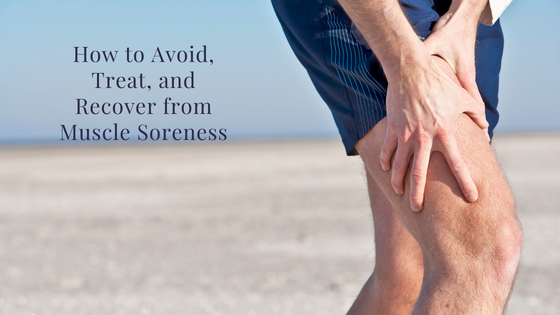Do you often feel sore and achy after a workout? If so, you’re not alone. Muscle soreness is a common side effect of working out and can take anywhere from a few hours to a few days to recover from. In this blog post, we will discuss what muscle soreness is, how to avoid it, how to treat it, and how to recover from it. We’ll also provide some tips on how to make your workouts less painful overall!

What is Muscle Soreness?
Muscle soreness is the result of microscopic tears in your muscle tissue. These tears occur when you put your muscles under more stress than they’re used to, such as during a new or challenging workout. The good news is that these tears are actually a sign that your muscles are getting stronger! However, the downside is that they can cause some discomfort in the meantime.
How to Avoid Muscle Soreness
There are a few things you can do to avoid or minimize muscle soreness. First, make sure you warm up before your workout. This will help increase blood flow to your muscles and prepare them for the work ahead. Second, start slowly and gradually increase the intensity of your workouts over time. If you try to do too much too soon, you’re more likely to experience soreness afterward. Finally, be sure to cool down after your workout and stretch any tight muscles. If you follow these tips, you should be able to avoid most instances of muscle soreness. However, even if you do everything right, there’s still a chance you’ll feel some discomfort from time to time. That’s why it’s important to know how to treat and recover from muscle soreness when it does occur.
Treating Muscle Soreness
There are a few things you can do to ease the discomfort of muscle soreness. First, apply ice to the affected area for 20 minutes at a time. This will help reduce inflammation and pain. You can also take a warm bath or use a heating pad on low heat. Just be sure not to overdo it, as too much heat can actually make the pain worse. Finally, over-the-counter pain medications like ibuprofen can also be helpful in relieving pain and swelling. If you’re still feeling sore after a day or two, there’s no need to worry. In most cases, the pain will subside on its own after a few days. You can use tape for exercise, like kinesiology tape, to help support your muscles during this time. However, if the pain is severe or lasts longer than a week, it’s important to see a doctor. They can rule out any other potential causes of your pain and help you find more effective treatments. Recovering from muscle soreness is just as important as avoiding it in the first place. That’s because the process of recovery is what helps your muscles repair and grow stronger. To recover from muscle soreness, make sure you get plenty of rest. This means taking a break from exercise for a day or two until the pain subsides. You should also make sure you’re staying hydrated by drinking lots of water and eating foods that are rich in electrolytes. Finally, continue to stretch and foam roll regularly to keep your muscles loose and prevent future soreness.
Muscle soreness is a common side effect of working out, but there are things you can do to avoid it. If you do experience muscle soreness, be sure to treat it properly and allow your muscles time to recover. By following these tips, you can make your workouts more enjoyable and less painful overall!
About the Author
Contributing Author
This article is written by a contributing author.
If you found this post useful, please Pin It!

Hi, before you go…
Don’t forget to join the email list!
Don’t forget to join in on the conversation on social media.![]()
![]()
![]()
![]()
![]()


